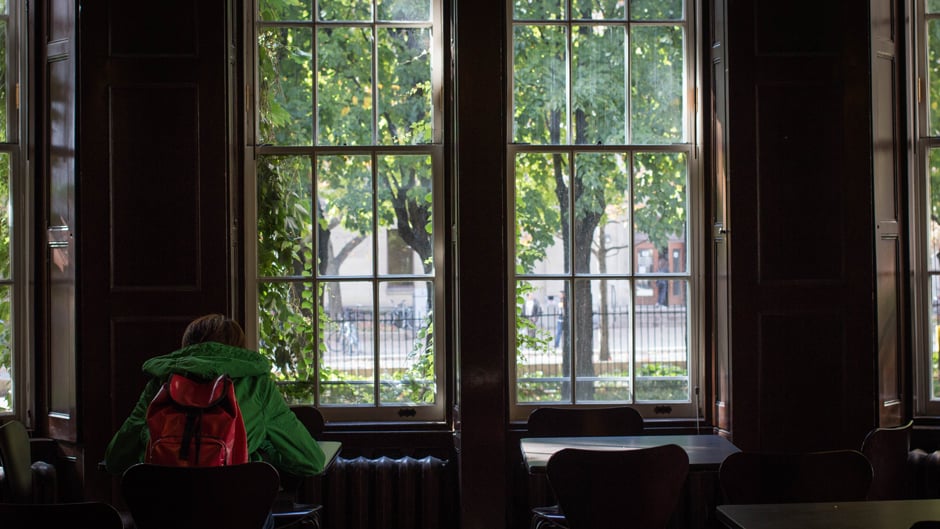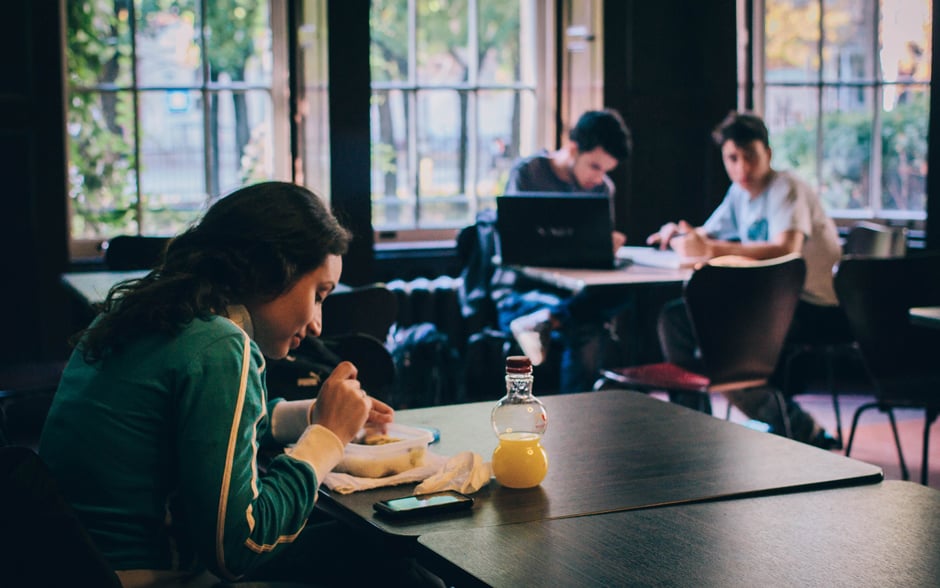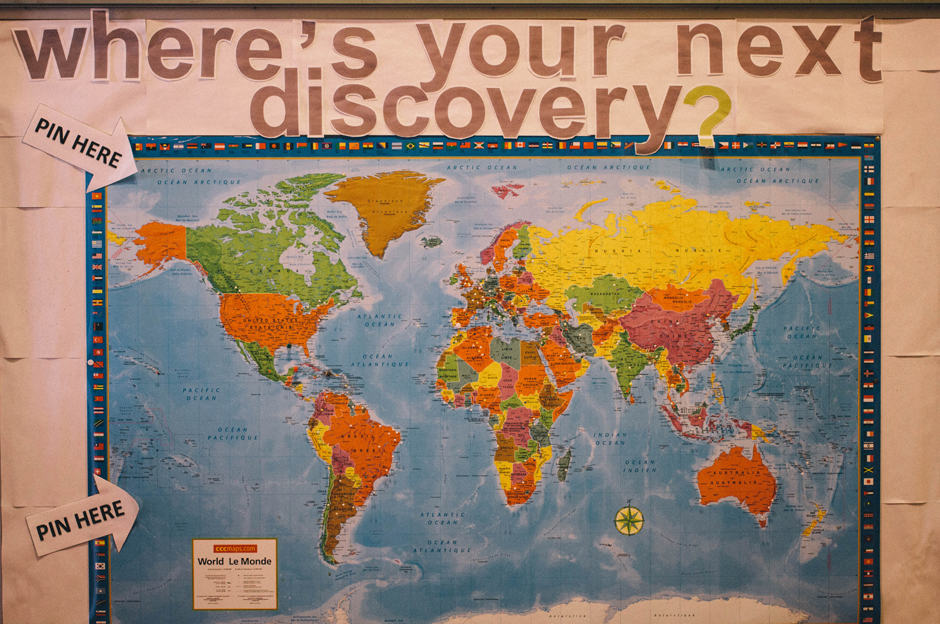Many U of T students find comfort and community in student-run cultural groups. But not everyone can place themselves within just one cultural category. “For a lot of international students, when someone asks you where you’re from, it’s not just the one place,” explained Marine Lefebvre, president of the International Students Association (iNSA). “Some people don’t understand that, and sometimes they get weirded out too. They’re like, ‘where’s home?’ and it’s like, well, why do I have to have a really precise home?”
Born in France but having lived most of her life in Belgium and Spain, Lefebvre is but one international student attending U of T that doesn’t have a single culture to call her own. This is part of her explanation for why she founded the iNSA. “We realized there wasn’t really one association that took all international students and put [them] into the same community. There were so many associations [for separate cultural identities] — the Chinese Students [and Scholars] Association is huge — but they’re all separate, which is kind of sad,” she said.
U of T’s undergraduate population can seem staggering in scale — a whopping 67,128 students make their way through its halls and classrooms every day. Of these, 10,276 are international students, coming to Toronto from all over to receive a world-class education.
With numbers like these, spread across three campuses, the existence of a clear-cut single university-wide community seems almost impossible. How, then, do students find a place for themselves to build relationships and support networks? The answer, at least in part, seems largely to do with the many cultures that make up U of T’s vast population.
Nowhere is this better represented than by the Ulife website — by clicking on the “Culture and Identities” tab of their group listings, 10 pages of search results appear, with 52 distinct groups encompassing the many cultural identities at U of T. These groups provide a community for both domestic students looking to ground themselves within a large institution and international students attempting to deal with the culture shock of living in a new country. But they also create a fractionated campus landscape, where students are defined by their cultural background and meet people based on that criterion.
“A similar foundation”
“It was [a] really good opportunity for me to connect with people of a similar faith, of a similar method of carrying themselves, with a certain lifestyle,” explained Amina Mohamed, speaking about her involvement in the Muslim Students’ Association (MSA). Mohamed is editor-in-chief of The Muslim Voice magazine and a member of the MSA.
“I think [for] the majority of us, our primary friend base belongs to, or has come from, the MSA,” Mohamed said, going on to say that she and most of her peers found the club through word of mouth. “I think it’s really hard at U of T, since it’s really big,” she admitted.
Halla Ahmed, vice-president, student life of the MSA, agreed with Mohamed’s sentiments. “I got involved first year…being a part of the MSA opened me up to a lot of other things that were going on, like religion classes, and finding out…where I could find halal food on campus,” she explained. “As a first-year Muslim student, that was really beneficial.”
Both students said that the MSA was instrumental in helping them find a way to relate to and be part of U of T. With a membership of over 1,500 students, many of whom are international, they’re not the only ones.
Mohamed explained that she became part of the MSA in her second year, after finding that her relationships from frosh week weren’t sticking. “[The] friendships…were based primarily in the screaming and the yelling and the excitement that is frosh week and as fun as that was, it wasn’t something that was sustainable. I had…I mean I’m from a Muslim family so I had a curfew; I had a variety of things that really inhibited my participation with the community that had been thriving at [University College]. The thing about the MSA was that there were a lot of people who were in a similar situation as me where you need to be home before evening prayer, or do any number of things,” said Mohamed. She described members of the MSA as “having a similar foundation,” to the point where she sometimes does not realize members of the club are international students to begin with.
One of the largest demographics on campus is Chinese international students — of the 10,276 international undergraduate students, they make up more than half. Clubs that exist for this particular cultural group range from a magazine to chess clubs and musical groups. Yan Wang is the president of the Chinese Students and Scholars Association, which was established at U of T in 1982, and has a combined membership of over 20,000 students and alumni.
“This year we have an average of a thousand people. Over half of our membership are international students — it’s a very active and energetic community. We organize a lot of events both on and off campus,” he explained.
When asked if he felt that international students, or members of the association in general, related more to the club and it’s community than to a broader U of T community, Wang was optimistic, stating that the community within the club is part of the larger U of T community. He sees it as one part of a large whole instead of something distinct and separate.
“Honestly, we’re quite popular and famous around the U of T community,” he stated proudly, “It’s a cultural hub.”
Welcoming spaces
When discussing the places where international and domestic students go to interact with their cultural communities, certain spaces are mentioned again and again.
Administrators will most often point to the Centre for International Experience (CIE) as the number one place for international students to turn to. Yet no literature specifically pertaining to international students is displayed at its location at Cumberland House, nor is information about university-sponsered programming for internationals readily available.
“The CIE is understaffed, and it’s based mostly in exchanges, not providing for international students,” Lefebvre explained. A factor behind her decision to create the iNSA — now in its first year — was to try and provide for international students in a way the university did not seem to be doing.
“U of T’s really good at that — bringing international students in, but not taking care of the ones they have,” she said.
Lefebvre went on to explain that “international students do need a tailored kind of help.” When she first arrived in Toronto, she didn’t know where to buy groceries or linen for her dorm room. “Culture shock, even when it’s not intense, means adjusting. U of T is so big — that’s the main problem. If you don’t have res life, or a club, it’s difficult to meet people. I count myself lucky to have [sic] res first year, but second year I had nothing, and that’s what drove me to want to do iNSA.”
A less obvious option, but still a gathering place for students, is Hart House. Established in 1919, the building acts as a place for students to come together across the lines that may divide them.
“It’s this notion of a relationship, it’s this notion of community, it’s this notion of connecting. Because people want to [be] part of something, and the university is large, and that’s why I think this house is so crucial to the student experience,” explained Rita O’Brien, chief administrative officer at Hart House.
Hart House runs a number of events throughout the year that aim to bring U of T students together under one roof. So far this year, they’ve hosted their Thanksgiving dinner and are just about to have their second Halloween party. O’Brien sees one of Hart House’s main goals as reaching out to the students at U of T, both domestic and international.
“What we’ve heard from a number of international students is that they really are in the Canadian experience,” O’Brien explained. “So one of the things we try to do is to outreach to as many constituencies as possible and to let them know what’s available at Hart House, to try and make sure that they can take advantage of the things that we offer.”
O’Brien’s message is reflected in Hart House’s mandate: to be a house for students to come and feel at home. “It’s a wonderful place, when you think of the common spaces that we have — the library, the map room. For us it’s getting these students in the door,” she expressed, “I think it’s hard to connect — I think that’s the key thing. It’s tough to break those barriers down, so for us at [Hart House], the notion of allowing students to — and not just international students, but all students — to push and stretch themselves outside of their comfort zone is so important, because it builds up a sense of who you are.”
Whether or not Hart House is succeeding in this goal is difficult to measure. But when asked if she had heard from international students that Hart House was a gathering place, Lefebvre answered: “Hart House? I mostly just use it as a gym. I didn’t realize they did Thanksgiving dinner, or anything.”
Building connections
Leora Freedman is the coordinator of the English Language Learning (ELL) program at U of T, which seeks to support students whose first language is not English. ELL offers an eight-day summer intensive course for those wanting to improve their English before the school year, as well as hour-and-a-half long workshops throughout the year.
Through her position, Freedman meets a wide range of students of different cultural backgrounds, working to immerse themselves in the English-speaking community of U of T. While ELL works with both domestic and international students, she sees a distinct line between the two groups. “I see our most pressing need not in terms of programming but simply in terms of general awareness and attitude,” she explained, “Many of our international students are eager to speak with domestic students, but they often find it difficult to connect. I think we need more awareness on campus that it’s really important, worthwhile, and beneficial to everyone if we start conversations with the people around us.”
She went on to explain that while it may sometimes seem that an international student doesn’t have much to say, the issue may be self-consciousness about errors or a lack of understanding of the local culture. “I’d advise people to be ‘chattier’ with [students who speak English as a second language], as they learn a lot even from listening to us. And, also, they can be drawn into conversations if you make the effort and ask them a series of questions,” said Freedman.
“An effective home”
Mark McGowan was appointed this year as senior academic advisor to the dean, international. In this role, he “oversees the implementation of the Faculty’s international academic priorities.” He works to both actively recruit international students and to ensure that those attending U of T have the best experience possible.
McGowan spoke about the challenges he feels are most daunting to international students: how a North American university works, what the expectations are, and how to engage with a strange language and culture. He explained how U of T tries to assist international students by creating writing seminars, college-related activities, English learning, and skill learning to help transition students. He also highlighted another key problem: loneliness. For both international and domestic students living away from home, U of T can be a daunting experience with seemingly few support systems.
When asked what the university could do to try and combat this, McGowan said, “I think the university as a community has to reach out to the various communities within. That’s difficult, and I think what the university has to do is get its head around what’s going to be effective — an effective home, where all students feel that they can engage, whether that’s academic communities or co-curricular communities. That’s one of our biggest challenges as a university.”





